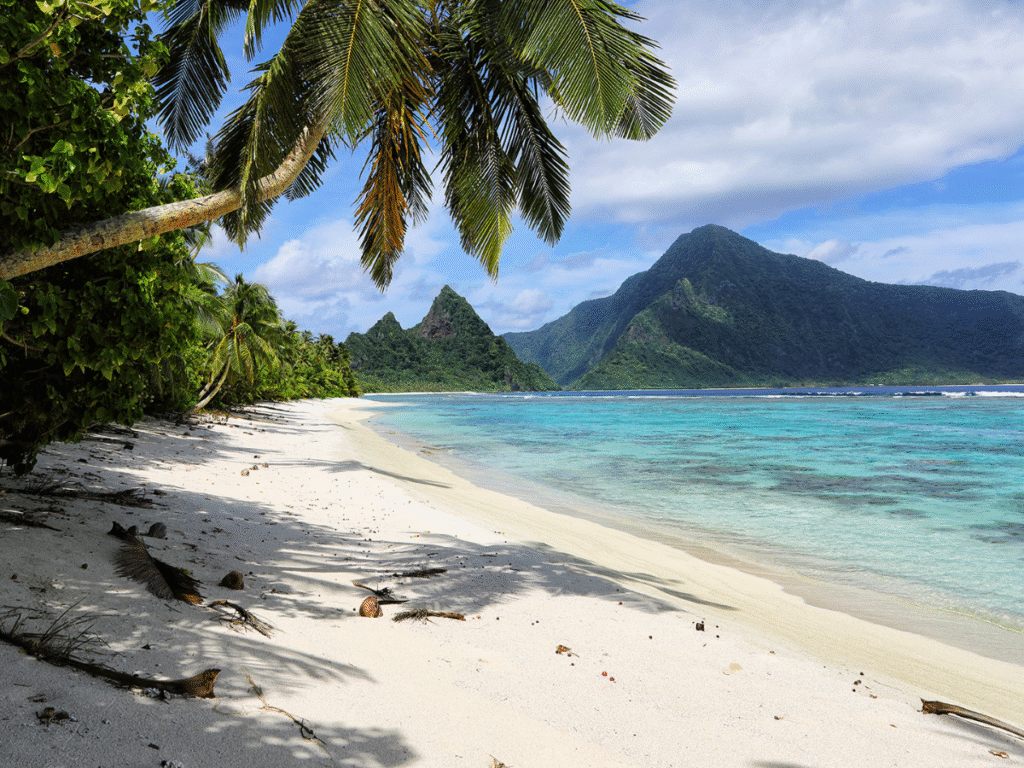There’s a reason Aruba keeps popping up on every “must-visit” list — and it’s not just because of the dreamy beaches. Aruba is where the sun practically resides, the waters sparkle as if someone turned up the brightness, and good vibes are essentially part of the atmosphere. Whether you’re in it for the island cocktails, the adventure-packed days, or simply that sweet feeling of doing absolutely nothing, Aruba makes it far too easy to switch to vacation mode.
If you’re ready to trade traffic jams for sunsets and endless group chats for ocean breezes, you’re in for a treat. This guide is your all-access pass to everything Aruba — from hidden beaches to the best places to enjoy a fresh seafood feast.

Before you start planning your Aruba adventure, you should know — this isn’t just another island getaway. Aruba has some hidden gems that make it stand out from every other sunlit destination you’ve scrolled past on Instagram. Here’s why this little slice of paradise deserves to be at the top of your travel list:
- Sunshine on demand: Aruba isn’t playing around when it comes to perfect weather year-round, averaging 82°F (28°C) with nearly daily sunshine- a built-in tan guarantee. Even in the rainy season, showers are brief, so skip the umbrella and bring sunscreen and shades instead.
- Safety: Aruba allows free exploration as one of the safest Caribbean islands, offering a relaxed, friendly vibe from your arrival. Whether wandering downtown Oranjestad, visiting a beach bar after dark, or road-tripping across the island, you will feel welcome and secure during your stay.
- Luxury: Aruba knows how to do luxury with five-star beachfront resorts and high-end spas, minus the stiff, formal vibe. You can lounge poolside with champagne or grab fish tacos at a beach shack, making it polished, fun, and relaxed- the ideal luxury.
- Easy to get to, hard to leave: Direct flights from hubs like New York, Miami, Toronto, and Amsterdam make Aruba more accessible than expected. Queen Beatrix International Airport offers U.S. Customs pre-clearance for a smoother return trip. Getting there is easy; leaving is the challenge.
- No bad time to visit: Sitting outside the hurricane belt offers a major advantage. You can visit any month and enjoy sunshine, warm breezes, and stunning sunsets. While December to April is busier and pricier, even the off-season feels like a private island escape.
Aruba offers everything from beachfront luxury to charming hideaways that perfectly match your vibe. Here are some of the best options to ensure your stay is as unforgettable as the island itself:

- Hilton Aruba Caribbean Resort & Casino
If you’re dreaming of the classic beachfront experience, the Hilton Aruba delivers. Imagine white-sand beaches just steps from your room, two large pools, and a vibrant beach bar where happy hour is perfectly timed. The rooms are spacious, the atmosphere exudes laid-back luxury, and the location keeps you close to all the Palm Beach action without feeling chaotic. Bonus points for the spa and sunset views that will leave you wondering why you ever booked a return flight.

- Hyatt Regency Aruba Resort Spa & Casino
Looking for a polished resort that still feels fun? The Hyatt Regency Aruba ticks all the right boxes. With a stunning pool featuring a waterfall and waterslide, a luxury spa, and direct beach access, it strikes the perfect balance between relaxation and activity. The service here is top-notch without feeling stuffy, and the on-site restaurants offer incredible flavour. Plus, you’re right in the heart of Palm Beach — steps away from shops, bars, and late-night excitement if you’re feeling social.

- The Ritz-Carlton, Aruba
If you’re ready to go all-in on luxury, The Ritz-Carlton is the place to cash that check. Expect five-star everything — oceanfront suites, gourmet dining, a full-service spa, and a level of service that makes you feel like island royalty. It’s quieter and a little more tucked away than some of the other resorts, making it perfect if you’re looking for a more private, pampered stay. Pricey? Absolutely. Worth it? Every single penny.

- Bubali Bliss Studios
Looking for something a bit more low-key yet still stylish? Bubali Bliss Studios is the place for you. This boutique establishment offers bright, modern studios with kitchenettes, a pool to relax in, and a location just a short walk from Eagle Beach. It’s ideal if you want some independence without sacrificing comfort. Plus, it’s budget-friendly, allowing you to save your cash for more important things — like extra mojitos and sunset cruises.

Aruba isn’t just about the beaches — it’s also a full-blown food paradise. While the powdery sands and turquoise waters grab all the attention, the island’s food scene remains seriously underrated. Fresh seafood pulled straight from the ocean, tropical cocktails that hit just right, juicy grilled meats, and bold Caribbean flavours are all part of the daily routine here. Whether seeking a casual beach bar for sunset drinks or dressing up for a wood-fired dinner in town, Aruba knows how to serve it up. From rustic shacks to trendy hotspots, there’s something here to satisfy every craving — and trust me, you’ll want to taste it all.
Here are a few must-try spots to fuel your adventures:
- Craft
- Pinchos Grill & Bar
- Azar Open Fire Cuisine
- Lola Taqueria
- Po-Ké Ono Aruba
- Lima Bistro
- Fat Tuesday Aruba
- Fresco
- The Sexy Shrimp
- Senor Burrito
- Fred Royal Aruba
- The Kitchen Table

Sure, you could spend your entire trip lounging on a beach chair — drink in hand, toes buried in the sand — and honestly, no one would blame you. Aruba practically invented the art of relaxation. But if you’re the kind of traveller who enjoys mixing a bit of adventure into their sun-soaked days, you’re in for a treat. Beyond the postcard-perfect beaches, Aruba has rugged deserts, vibrant underwater worlds, hidden coves, and just enough adrenaline to keep things engaging.
You can snorkel next to vibrant reefs, race down dusty UTV trails, sail into a breathtaking sunset, or venture into caves that resemble scenes from an adventure film. The greatest advantage? Everything is conveniently located, allowing you to enjoy a variety of activities without feeling hurried. Here are some unforgettable experiences you’ll want to brag about later:

Covering nearly 20% of the island, Arikok National Park showcases Aruba’s wild side. Picture dusty desert trails, jagged cliffs, secret caves adorned with ancient Arawak Indian drawings, and coastlines so rugged you’ll wonder if you’ve left the Caribbean altogether. It’s raw, untamed, and absolutely worth exploring. Rent a 4×4 or join a guided tour to delve deeper into the park, and don’t miss the famous Natural Pool (“Conchi”) — a hidden oasis where you can float in calm, crystal-clear water as waves crash dramatically around you. It’s a bumpy ride to get there, but trust me, the adventure is half the fun.

If you’ve ever wanted to live out your cowboy-on-the-beach fantasy, this is the place to do it. The Aruba Ecological and Beach Horseback Ride takes you through some of the island’s most stunning landscapes — rugged desert trails, cactus-studded hills, and eventually right down to the sparkling coastline. Whether you’re a complete beginner or a seasoned rider, the guides make it easy and relaxed. Trust me, there’s nothing like trotting along a quiet beach with the ocean breeze in your face and the sun setting behind you. It’s one of those “this can’t be real” experiences you’ll be bragging about long after you’re back home.

Aruba’s beaches aren’t just beautiful — they’re among the best in the world. Each one has its own vibe, ranging from lively and social to completely serene. Whether you enjoy swimming, snorkeling, floating for hours, or simply soaking up the sun with a drink in hand, there’s a stretch of sand here waiting for you. The best part? You don’t have to choose just one. Renting a car or taking a cab makes it easy to beach-hop your way across the island.
- Eagle Beach — White sand, fofoti trees, and calm waters. Ideal for beach days and sunset photos.
- Palm Beach — Energetic, resort-lined beach with bars and water sports, perfect for lively beach days.
- Baby Beach — Shallow, clear water for floating, snorkelling, and swimming.
- Mangel Halto — A hidden gem for snorkeling and mangrove shores, ideal for fewer crowds and more marine life.
- Arashi Beach — Calm waves and easy snorkeling off the beach create a laid-back vibe- perfect for a chill afternoon.

You can’t miss a sail and snorkel trip in Aruba if you’re seeking the ultimate “this is the life” experience. Imagine yourself cruising along the vibrant blue Caribbean with music playing, a drink in hand, and the sun warming your face. Most tours stop at some of the island’s top snorkel spots — like the famous Antilla Shipwreck and colourful coral reefs teeming with tropical fish. You might see a few sea turtles gliding through the water like absolute pros if you’re fortunate. Whether diving in or just relaxing on the deck with a rum punch, it’s the day when the hours vanish, and you forget what “stress” feels like. Some tours even include snacks, an open bar, or a full-blown BBQ — not that you’ll need any convincing.
Packing smart for Aruba can make the difference between a good trip and a great one. The island’s climate is warm and breezy year-round, but the strong sun, outdoor activities, and beach lifestyle mean you’ll want to be prepared beyond the basics. Here’s what you should include in your suitcase to ensure you’re ready for every aspect of the trip — from the beach to the desert trails, to dinners by the ocean.
- Light, breathable clothing: Aruba’s temperatures rarely dip below warm and comfortable, so pack lightweight clothing that is easy to move in. Linen shirts, cotton dresses, swimwear, shorts, and quick-dry fabrics will serve you well. Bringing multiple swimsuits is a smart idea since you’ll likely spend a lot of time in the water.
- Flip-flops & comfortable sandals: Footwear should be simple and practical. Flip-flops and sandals are perfect for the beach, while a slightly dressier pair is useful for visits to upscale restaurants or hotels. A pair of closed-toe shoes is recommended for hiking or exploring rugged areas like Arikok National Park.
- Reef-safe Sunscreen: Aruba’s strong sun necessitates a high-SPF sunscreen that is also reef-safe. Protecting your skin and the island’s marine life is crucial, especially if you plan on snorkeling or swimming. Apply it generously and reapply throughout the day, particularly after swimming.
- Snorkel Gear: While many tours provide equipment, bringing your own snorkel mask guarantees a better fit and greater comfort — especially if you plan to snorkel multiple times. It’s a lightweight addition to your luggage that can significantly enhance your beach days.
- Sun hat & polarized sunglasses: A wide-brimmed hat and quality sunglasses aren’t just for style — they’ll protect you from the intense Caribbean sun. Polarized lenses are especially helpful if you’ll be near or on the water, reducing glare and protecting your eyes.
- Portable Charger: Between using maps, taking photos, and staying connected, your devices will be heavily utilized. A trustworthy portable charger guarantees you won’t run out of battery in the middle of a day of exploring.
- Light jacket Or Sweater: While Aruba is warm, evenings by the water or boat outings can sometimes feel cool because of the constant breeze. A light jacket or sweater provides comfort during these times.
- Waterproof Bag: With all the beach and boat activities, a waterproof bag protects your essentials, including phones, wallets, and cameras, from sand and water damage. It’s a simple item that can help avoid major headaches.
- Travel-Size Grooming Essentials: The combination of sun, saltwater, and wind can be harsh on your skin and hair. Bring moisturizer, SPF lip balm, a quality conditioner, and a mild face cleanser to stay refreshed during your trip.
- A Travel-Size Cologne or Perfume: After long days in the sun, a light, fresh scent can be a lovely addition when going out for dinner or spending a night by the beach. Choose something relaxed and not overpowering — perfect for the island vibe.

Before you book your flight and start packing your beach bag, here are a few final tips to help you make the most of your trip to Aruba:
- Best Time To Visit: Aruba is a year-round destination due to its location outside the hurricane belt. However, the most popular time to visit is during the dry season from December to April, when the weather is perfect and the island is lively. If you’re looking to save on accommodations and enjoy quieter beaches, the off-season (May to November) still offers excellent weather with fewer crowds.
- Currency: Aruba’s local currency is the Aruban Florin (AWG), but U.S. dollars are accepted almost everywhere. Credit cards are commonly used as well, but it’s advisable to carry some cash for small purchases, tips, or local markets.
- Transportation: Renting a car offers the most flexibility, particularly if you wish to explore beaches and natural sites beyond the hotel areas. Taxis are both available and reliable, but rates are determined by the government, so it’s wise to confirm the fare before you ride. There’s also a public bus system (Arubus) that is economical and straightforward to use for navigating main areas.
- Language: Aruba’s official languages are Dutch and Papiamento, but you’ll find that English and Spanish are also widely spoken. Communication is easy, and the locals are incredibly welcoming, so don’t hesitate to ask for directions, recommendations, or even a quick lesson in Papiamento phrases.
- Tipping etiquette: A service charge is often included in restaurant bills, usually ranging from 10% to 15%. It’s still common to leave a little extra if the service was exceptional. For taxis, rounding up the fare is appreciated.
Aruba isn’t the cheapest Caribbean destination, but expenses depend on your lifestyle. Mid-range travelers spend about $200–$300 USD daily for accommodations, meals, transportation, and activities. Boutique hotels and Airbnb rentals start at $100–$150 USD nightly, while luxury resorts like The Ritz-Carlton exceed $ 500 per night. Dining options vary: casual meals cost $15–$20 USD, while fine dining ranges from $40–$70 USD per person. Eating at local restaurants and markets allows you to enjoy the island without overspending.
Transportation and activities vary based on your desired exploring level. Rental cars cost about $40–$60 USD per day, while taxis and public buses are good options near Palm Beach or Oranjestad. Many top experiences in Aruba, like visiting Eagle Beach or hiking in Arikok National Park, are free or low-cost. Guided tours, such as UTV rides, snorkeling cruises, or horseback riding, typically cost $50–$120 USD per person. Whether you seek a budget-friendly adventure or a luxury escape, Aruba has plenty of options to customize your trip according to your style.
At Many Men Magazine, travel isn’t just something we write about — it’s something we live. Our team has spent years exploring destinations around the world, with Aruba holding a special place on that list. We believe in experiencing places firsthand before recommending them to you. From snorkeling off the coast to navigating downtown Oranjestad and relaxing on the island’s best beaches, we’ve dedicated time to understand what makes Aruba truly special. Our recommendations come from real experiences, not from press releases or secondhand tips. We’re committed to providing you with honest, practical advice that helps you maximize your trip — whether you’re planning a relaxing beach escape, an action-packed adventure, or something in between. Every guide we publish is designed to offer genuine insights you can trust, allowing you to spend less time worrying about details and more time enjoying the journey.
Is Aruba Expensive To Visit?
Aruba can be pricier than some other Caribbean destinations, particularly if you stay at luxury resorts and dine at upscale restaurants. However, with careful planning — such as combining casual dining with free beach days — you can comfortably maintain a mid-range budget.
What Is The Best Time Of Year To Visit Aruba?
The best time to visit Aruba is from December to April when the weather is dry, sunny, and ideal for beach days. This period also marks peak tourist season, so expect lively crowds and higher prices. If you prefer fewer crowds and better deals, visiting between May and November is a smart choice. Aruba’s location outside the hurricane belt ensures warm, breezy weather year-round, making it a dependable destination regardless of when you go.
Do I Need A Visa To Travel To Aruba?
U.S., Canadian, EU, and many other passport holders do not require a visa for short stays of up to 90 days. It’s always wise to double-check Aruba’s latest entry requirements according to your nationality before you travel.
What Currency Is Used In Aruba?
The local currency is the Aruban Florin (AWG), but U.S. Dollars are widely accepted almost everywhere. Credit cards are also commonly used, making it easy for visitors to pay without exchanging much cash.
Is Aruba Safe For Tourists?
Yes, Aruba is considered one of the safest islands in the Caribbean. Tourist areas are well-patrolled, and locals are known for their friendliness and welcoming nature. While petty crime, such as pickpocketing, can occur anywhere, it’s rare in Aruba. Basic travel precautions, such as being aware of your surroundings and securing your valuables, are recommended; however, you can generally explore the island with confidence.












